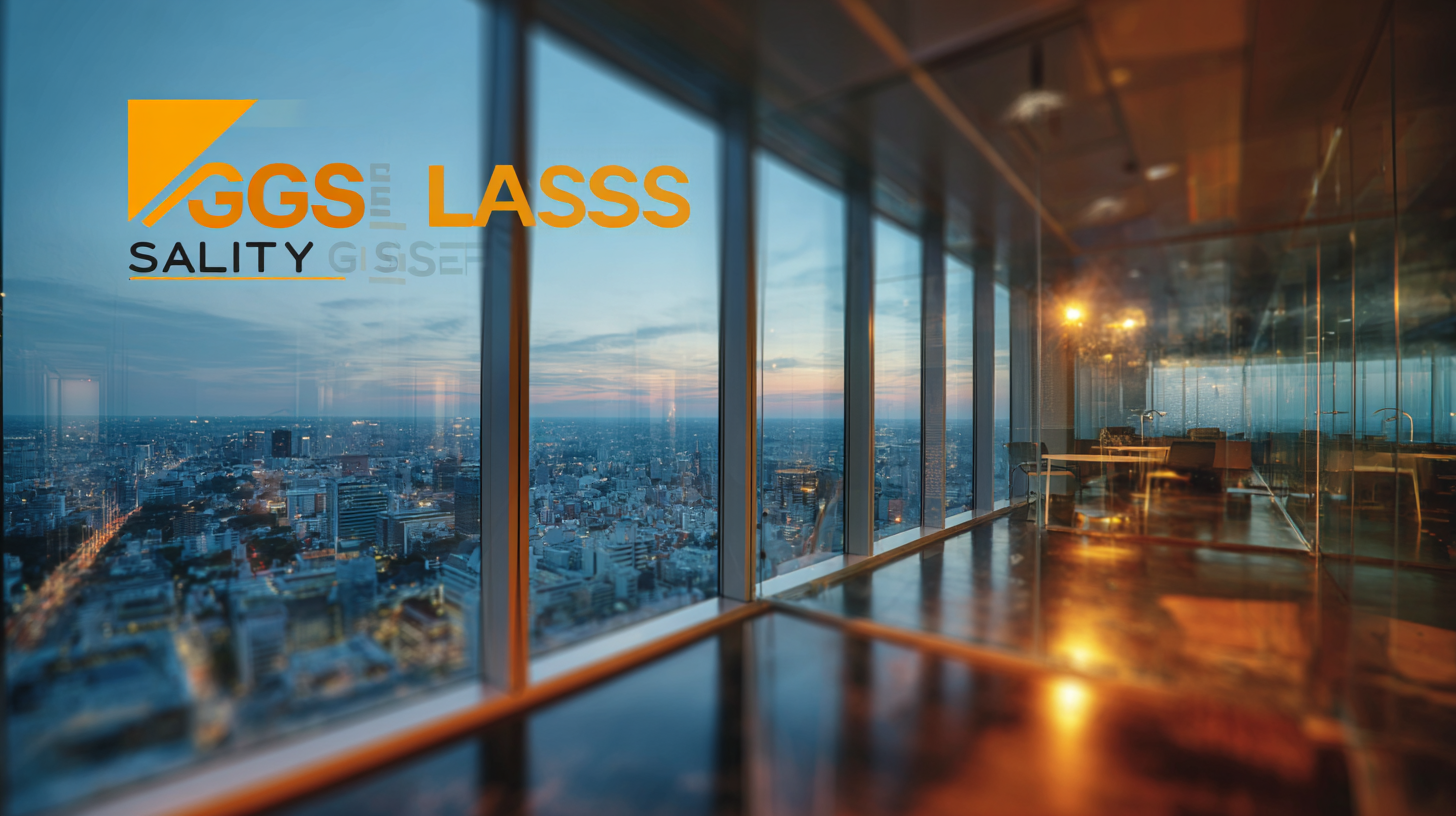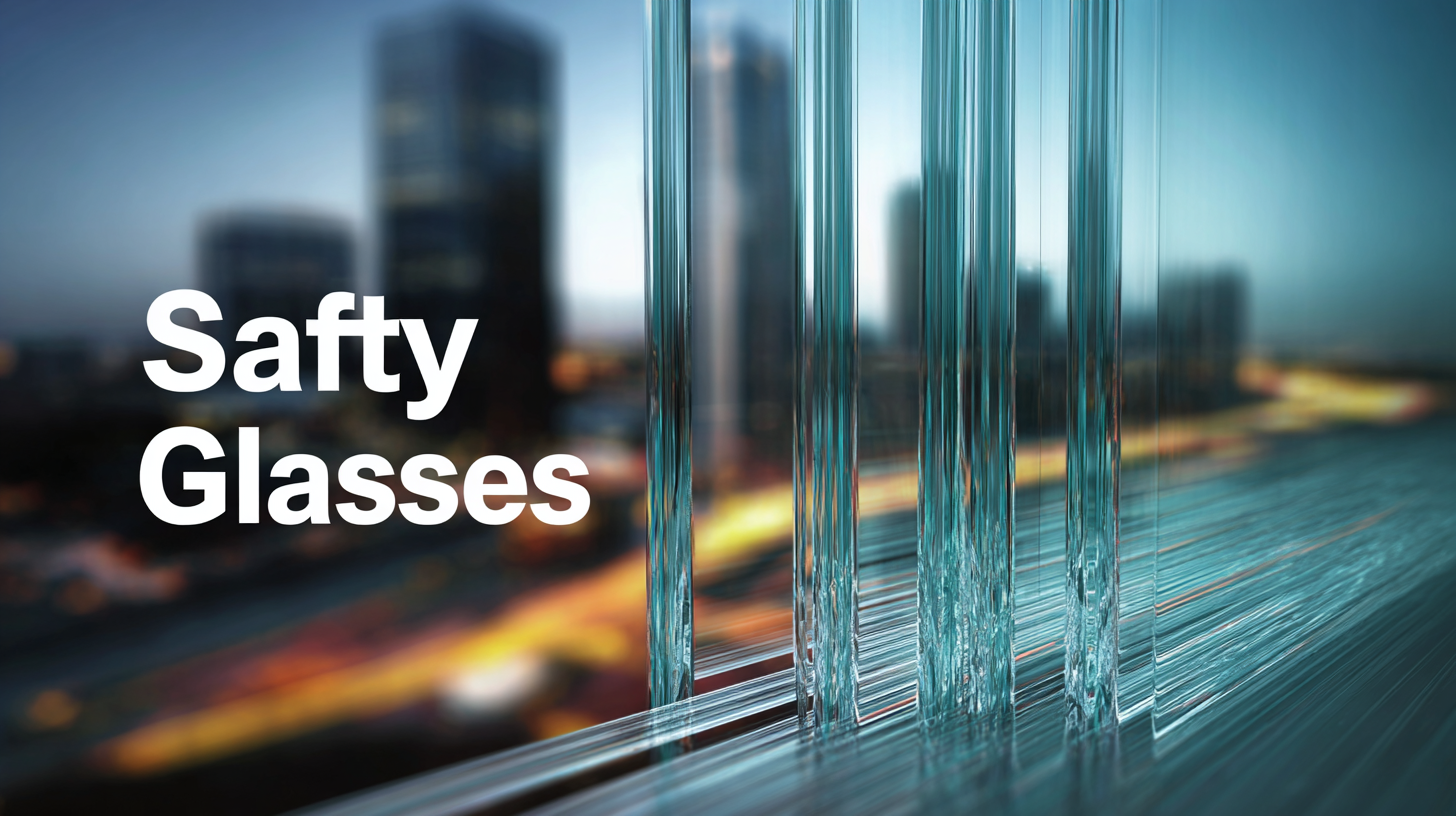
Global Market Trends for Best Safety Glass Panels by 2025 and How to Source Them Effectively
The global market for Safety Glass Panels is poised for significant growth as we approach 2025, driven by increasing safety regulations and a rising demand in sectors such as construction, automotive, and electronics. According to a recent report by Research and Markets, the safety glass market is projected to reach $30 billion by 2025, with Safety Glass Panels representing a substantial portion of this expansion. Innovations in manufacturing processes and materials, alongside heightened awareness of workplace and consumer safety, are shaping market dynamics. Additionally, the integration of advanced technologies like laminated and tempered glass is revolutionizing the design and functionality of these panels, making them more appealing to both manufacturers and consumers. Understanding these trends is essential for businesses looking to source Safety Glass Panels effectively and capitalize on emerging opportunities in a rapidly evolving landscape.

Current Trends in Safety Glass Panel Innovations and Their Future Impact
The safety glass panel industry is undergoing significant innovations, driven by advancements in technology and shifting market demands. As highlighted in recent reports on the household appliance glass sector, the industry is heavily influenced by trends in the appliance market, which is projected to affect glass types and applications by 2025. With several barriers to entry, including established competition and varying technology maturity levels, it is essential for companies to stay abreast of market trends and invest in R&D to differentiate their products.
Innovations such as enhanced durability, lightweight designs, and smart glass technologies are emerging as key trends. The rise of intelligent automotive systems is interpreting this evolution, where safety glass panels play a critical role. As vehicles become more integrated with smart technology, the demand for glass that not only provides safety but also integrates seamlessly with advanced displays is paramount. Industry forecasts suggest that the safety glass market will experience substantial growth, emphasizing the importance of strategic sourcing and investment in new technologies to maintain a competitive edge in the evolving landscape.

Key Global Markets Driving Demand for Safety Glass Panels by 2025
As we approach 2025, the global safety glass panel market is poised for significant growth, driven by key markets around the world. Industries such as construction, automotive, and pharmaceuticals are increasingly adopting safety glass to enhance structural integrity and protect consumer products. Notably, the construction glass market is projected to ascend to USD 148.1 billion by 2030, reflecting a robust demand for high-performance materials that prioritize safety alongside aesthetics.
The pharmaceutical sector also plays a crucial role, with the global pharmaceutical glass packaging market expected to reach USD 49.20 billion by 2034, growing at a CAGR of 7.87%. This growth underscores the rising need for safe, sterile, and reliable packaging solutions that meet stringent regulatory standards. As industries recognize the value of safety glass panels, sourcing them effectively becomes essential. Businesses must navigate through various suppliers and manufacturers, ensuring they select partners who prioritize quality, innovation, and sustainability to fulfill their increasing demands.

Effective Strategies for Sourcing High-Quality Safety Glass Panels
When sourcing high-quality safety glass panels, it is essential to establish solid relationships with reputable manufacturers. Begin by identifying trusted suppliers with a proven track record in producing safety glass that meets international standards. Attend industry trade shows and expos, where you can meet manufacturers face-to-face, discuss your specific requirements, and evaluate their production capabilities. Additionally, leveraging online platforms and industry forums can help you gather insights and reviews from other buyers, guiding you to the most reliable sources.
Another effective strategy is to conduct thorough quality assessments when selecting safety glass panels. Always request samples to verify the quality and durability of the products before making bulk purchases. Implement a rigorous inspection process that includes checking for adherence to safety certifications and standards. Collaborating with third-party quality assurance agencies can also ensure that the products you source fulfill all necessary regulations, ultimately protecting your investment and ensuring safety for end users. Investing time and effort into these sourcing strategies will pay off in delivering superior safety glass solutions in your projects.
Navigating Regulatory Standards for Safety Glass Materials Worldwide
Navigating the regulatory standards for safety glass materials is a critical aspect for manufacturers and suppliers aiming to operate in the global market. Various regions have established stringent regulations to ensure that safety glass panels meet specific performance criteria, particularly concerning impact resistance, thermal stability, and acoustic insulation. For instance, the European Union's EN 12150 standard outlines requirements for thermally toughened safety glass, while the American National Standards Institute (ANSI) in the U.S. provides guidelines for safety glass through ANSI Z97.1. According to a report by ResearchAndMarkets, compliance with these standards is not just a legal requirement but also an avenue for competitive advantage, as safety-conscious consumers increasingly prefer products that meet recognized safety benchmarks.
In addition to understanding these regulations, sourcing safety glass materials effectively requires collaboration with certified suppliers who can provide products that comply with local and international standards. A study published by Smithers Pira indicates that by 2025, the demand for safety glass in construction and automotive sectors is expected to grow significantly, driven by an increasing focus on safety and sustainability. Companies need to establish quality assurance programs and conduct regular audits of their supply chains to ensure compliance. By aligning sourcing strategies with regulatory frameworks, manufacturers can not only mitigate risks but also improve their market positioning in a growing global marketplace for safety glass panels.
Global Market Trends for Best Safety Glass Panels by 2025 and How to Source Them Effectively
| Region | Market Size (USD Billion) | Growth Rate (%) | Key Regulations | Main Application Areas |
|---|---|---|---|---|
| North America | 2.5 | 7.0 | ASTM E119, ANSI Z97.1 | Architectural, Automotive |
| Europe | 3.0 | 6.5 | EN 12600, CE Marking | Industrial, Residential |
| Asia Pacific | 4.0 | 8.5 | ISO 16281, JIS A 5759 | Construction, Transportation |
| Latin America | 1.2 | 5.0 | NBR 14651 | Commercial, Residential |
| Middle East & Africa | 0.8 | 5.8 | GCC Standardization Organization | Safety, Luxury Housing |
Best Practices for Collaboration with Safety Glass Manufacturers and Suppliers
Collaboration with safety glass manufacturers and suppliers is crucial for navigating the evolving global market. According to a report by MarketsandMarkets, the global safety glass market is projected to reach $16.4 billion by 2025, growing at a CAGR of 5.6%. This growth is driven by increased construction activities and stricter safety regulations across various industries. To effectively source safety glass panels, companies must establish strong partnerships with reputable manufacturers who understand industry standards and can meet specific safety requirements.
Best practices for collaboration include transparent communication and regular engagement throughout the development process. Utilizing tools such as collaborative platforms and project management software can help facilitate clearer dialogue and streamline operations. Recent studies from Allied Market Research also highlight the importance of integrating advanced technology and innovation in product offerings, emphasizing that companies that invest in R&D are more likely to gain competitive advantages. Firms should engage with suppliers who prioritize sustainability and offer durable, energy-efficient products, aligning with the growing consumer demand for environmentally friendly solutions. By fostering these collaborative efforts, businesses can enhance product quality while ensuring compliance with safety regulations.
